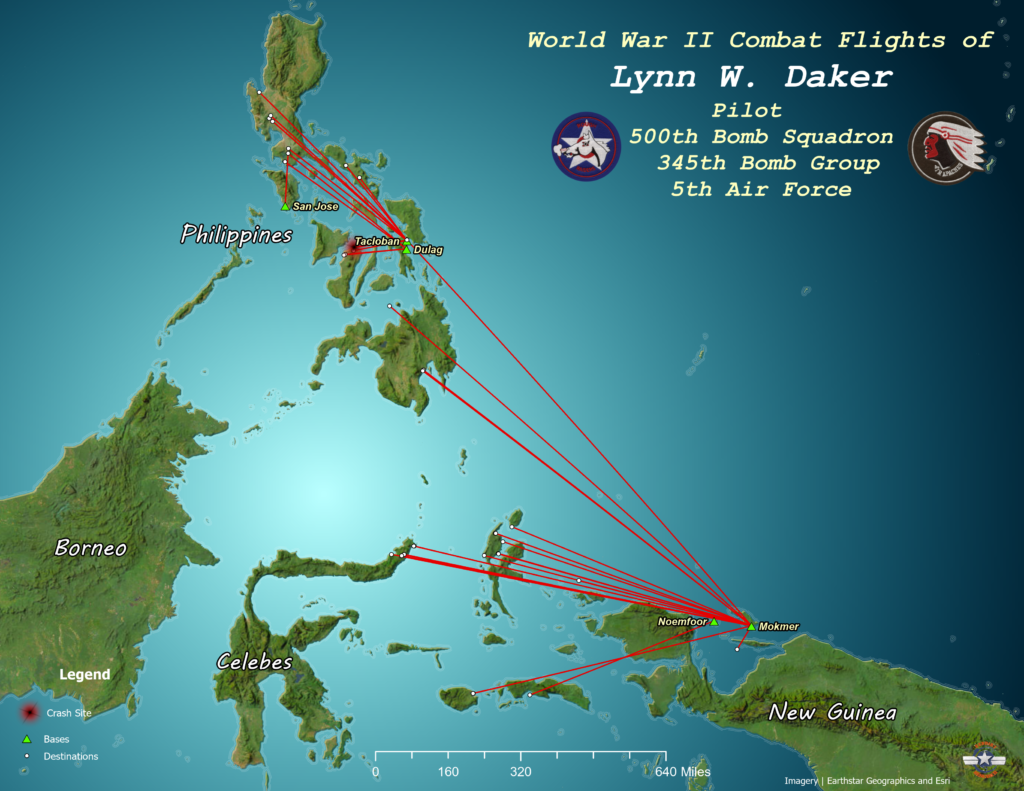I published a summary of the combat flights of Lynn W. Daker in October 2022 that was based on the flight data available in the mission reports and load lists of the 500 Bomb Squadron, 345 Bomb Group. Recently, I received a digital copy of the Record of Combat Experience for Mr. Daker as well as an autobiographical summary of his time during WW2.
After incorporating the new data, an updated map depicting his combat flights was produced. My thanks to Mr. Kelly McNichols, VP of the 345th Bomb Group Association, for providing the new documents.

Lynn W. Daker was born in Ryan, Delaware County, Iowa on April 26, 1922. He enlisted in the US Army on June 5, 1942 and went on to become a B-25 pilot. At the time of his enlistment he had completed four years of high school, was single without dependents, and listed office clerk as an occupation.
On June 22, 1944 he was shipped overseas. Being a pilot, he made the trip to the Southwest Pacific Area by ferrying a series of new B-25s from the US mainland to the war zone. His route overseas included flights between in San Francisco, Hawaii, Christmas Island, Canton Island, Tarawa, Guadalcanal, and Australia before arriving in Port Moresby, New Guinea on July 7. By August, he had joined the 345 Bomb Group that was then stationed on Biak Island, Dutch New Guinea.
His Record of Combat Experience, which was an administrative form used to justify and record a soldier’s accumulated points used for rotating back to the United States, listed forty combat flights. One of the flights was a weather reconnaissance that listed no destination or route and it is not displayed on the map.
Lynn Daker’s last recorded flight resulted in a ditching off Cadiz, Negros Island when the right engine of B-25 #44-29586 froze up. The crew, except for engineer/turret gunner SSgt Desire W. Chatigny, Jr., were rescued by a Catalina the same day. Upon returning to his unit, he was informed that he was being sent home. He arrived in San Francisco on April 26, 1945 aboard a troop transport and was discharged on July 9, 1945
